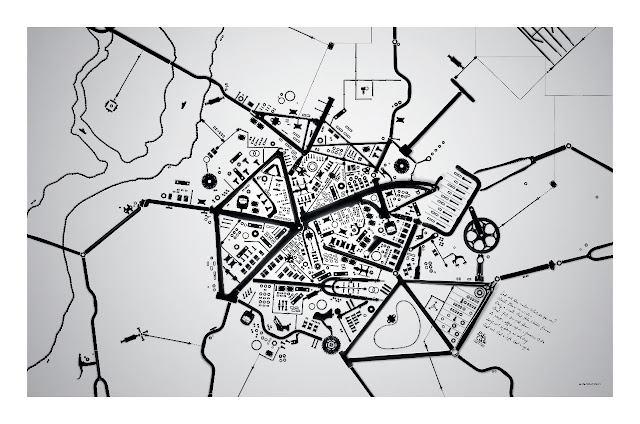I've just had the please of visiting Melbourne, Sydney, Adelaide and Brisbane. And I did a bit of riding in each city, utilizing the many bike lanes that have sprung up over the last few years. It is great to see Australia's cities putting in an effort to become more bike friendly. Between the cities I did noticed different types, or styles of cycle lane being implemented.
Firstly in Adelaide, nearly all the lanes seemed to be marked by white lines only. This is great, I guess, because its pretty easy to implement. Just paint the line. But I found it had a big draw back, after a while it didn't seem to be obvious enough which white lines indicated a cycling lane. The white lines for the bicycle lanes just seemed to become incoherent amongst all the other white lines on the road. Especially when a row of parked cars obscure one of the lane markings, making one think the other line is just indicating the parking zone.

I don't have a good picture of this, but just imagine if all the cars
are parked similarly to the first 2 cars, in the picture on the right, obscuring the dashed parking
line. Then you really cannot tell if there is a cycle way. This happened to me a few times, especially at night time, and in the wet.
The solution for this problem is pretty simple, and has been adopted in many areas. Paint the whole cycle lane a different colour. This works great, and at least by my limited survey seemed to be a more popular method of road marking in Sydney and Brisbane.
I'm sure this costs more, but it does make it plainly clear, in more situations where the cycle way is.
Sydney seems to be in favor of trying to create fully segregated cycleways, often called a Copenhagen Style Lane. This is where median strips, parked cars, or other sorts of barriers, to completely remove bicycles from the roadway. This is most probably the safest type of cycleway, but of course it is the most expensive to implement and requires a lot of space.
This sort of cycleway is great, but I also think it detracts from some of the freedom you can experience when riding. When you are on a segregated cycleway you cant zipp over to the other side of the road, or U-turn quickly. If you ride past something interesting and want to stop, its just not as easy, you have to look for an exit from the cycleway.
As a long term solution to increasing the number of people using bikes for transport, I don't think segregation of bikes and the best idea. I think cars and bikes can share a common roadway with a combination of adequate road markings and sensible speed limits.
At the moment, I am undecided about cycleways as shown below, where a single cycleway is divided into two lanes, rather than having a cycleway on each side of the road. To me this type of cycleway creates problems when you come to intersections, and want to turn, but your on the wrong side of the road to make a normal turn.
I guess in the end its good to be aware of the different type of cycleways, and road authorities should use the best type of cycleway for the given situation.























